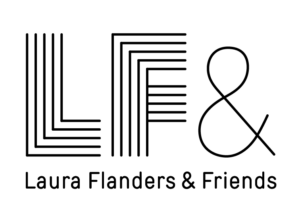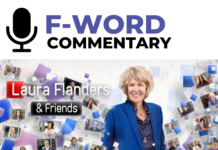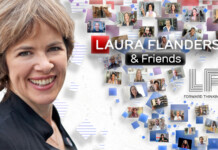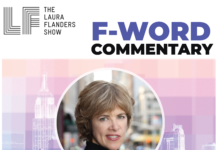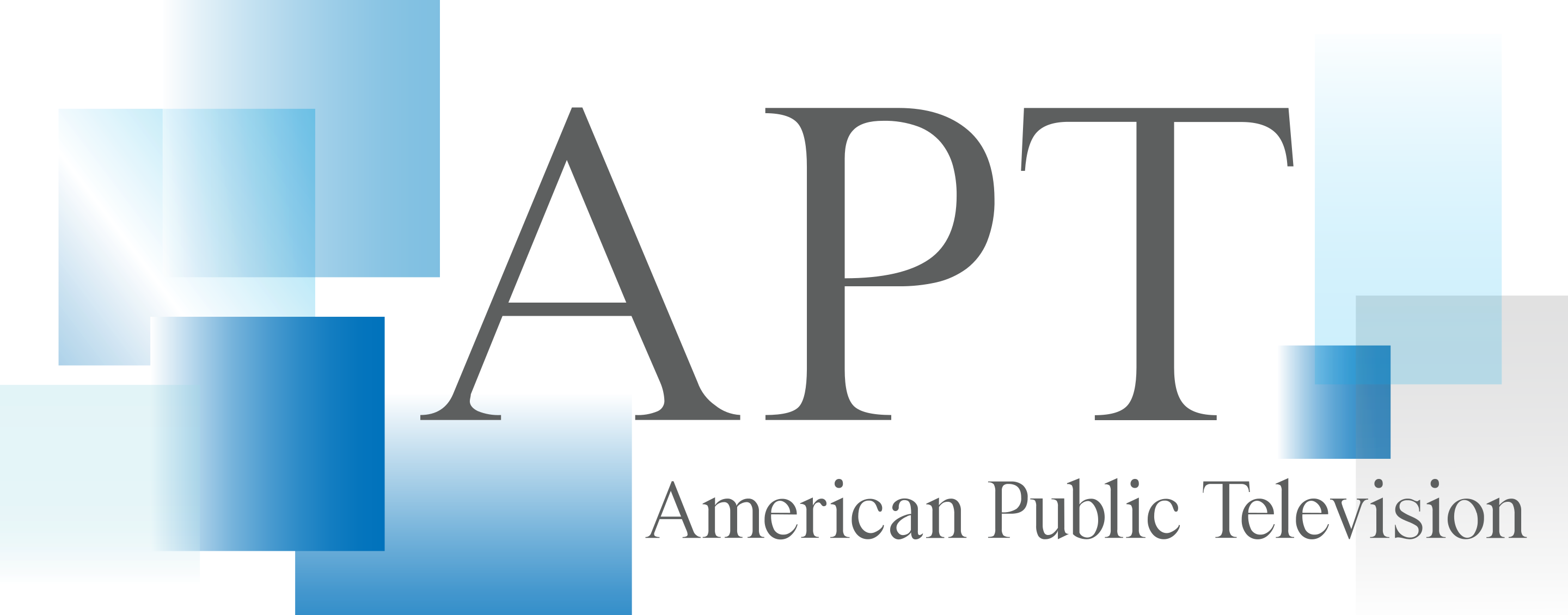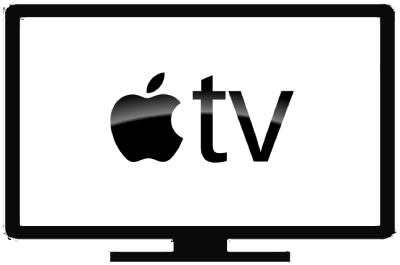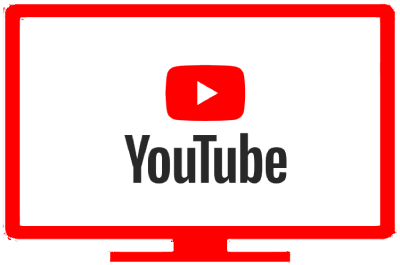About
Can dance and song offer insight into a person’s experience, and provoke curiosity, even empathy across national identity, race and gender? In this episode, Laura interviews MacArthur Genius Award-winning choreographer Okwui Okpokwasili about her groundbreaking experimental work to communicate the lived experiences of African and African American women through movement. Okpokwasili explains how she uses pain, action, gesture, and character-play to bypass audiences’ preconceived notions and bring visibility to identities rendered invisible by mainstream culture and Laura stumps her with her own question: what do you carry and how does that carry you?
To listen to the uncut interviews, and to get research and reading notes for this episode, become a Patreon partner here.
Guests:
- Okwui Okpokwasili, Choreographer, Performer and MacArthur Fellow
Where to Watch
You can watch this episode on your local WORLD channel at 11:30 am ET on Sunday, November 29, or on your local PBS station.
Click here to search all airing times near you.
Or
Click here to watch online on YouTube. The episode will be made available at 11:30 am ET on Sunday, November 29.
Listen
Transcript
– I am interested in how to make movement and make work that comes from an exploration of an interior life. It kind of feels like waves and waves inside of you. I’m very interested and concerned and compelled by working with women of color. I’m thinking about a particular condition, a particular human condition. And I think sometimes the body is doing things that belie the words.
– Still coming up on The Laura Flanders Show, the place where the people who say it can’t be done take a backseat to the people who are doing it. Can dance and song get you justice? Can they shame a person? Get restitution? Stir things up? MacArthur Genius Award winning choreographer Okwui Okpokwasili doesn’t call herself an activist or a dancer, but she’s keenly interested in the power of bodies to express things words don’t. Can movement and voice provoke curiosity, command attention and shift our frame of reference when our references are all too often white, Western and male? You’ll get to judge for yourself. The citation on her 2018 MacArthur Foundation Genius Award reads, for making visible the interior lives of women whose stories of resilience and resistance have been left out of dominant cultural narratives. It’s not a bad way to describe the work of multidisciplinary performer and choreographer Okwui Okpokwasili. Okwui, welcome to the program. Glad to have you on The Laura Flanders Show.
– Good to be here, Laura. So what did you make of that MacArthur description? Was that a good–
– I mean, I guess it’s good. I mean, I also wrote it, but there are always things that, you know, when you look back on it, you think, well is that incredibly accurate? I mean, I do think I am interested in how to make movement and make work that comes from an exploration of an interior life. That is about weaving a psychic space around the performer and the audience. However, and it is specifically centered around black women, I’m very interested and concerned and compelled by working with women of color. Especially as I feel growing up, I wasn’t seeing that. When I first came to New York, I was looking and trying to find a community of women of color who were doing what you would consider work that was maybe more experimental, a little bit more free of certain expectations about what dance is supposed to be. So I would say yes. But then I would also say maybe I could work it.
– You clearly have qualms about dance, calling yourself a dancer. Is choreographer okay?
– Yeah, I guess so. I mean I–
– And you also don’t call yourself an activist?
– I, well hum, yeah, no. Well– Well, because, first of all, I think there are so many people who are doing incredible work as activists. You know, I mean even when I was looking at Black Lives Matter, when that was emerging or when you’re looking at the Me Too movement, but also the woman who was actually drawing attention, who started Me Too, before we knew what Me Too was. I mean, I think there are so many people doing incredibly diligent work around making clear what inequities are happening. Like what the inequities are in our society right now, how to address them, who we need to talk to to shift it and change it. You know what I mean? And how to build coalitions around the conversations of inequity. I mean, I just feel like, I don’t know them–
– So having shouted out Tarana Burke and all those good people, you are nonetheless shifting thing with your work.
– I’m hoping to. I hope.
– So, I’m going to let the audience take a look. But before we go there, why the ambivalence about dancer?
– It’s not ambivalence, it’s that I have an incredible amount of respect for what dancers do because then I also feel like people have this idea of what dance means. And I’m sometimes not interested in being in contention about the definition of dance.
– Fair enough.
– I want a more open space. However, I do think the dance world, there is a conversation around what constitutes dance that’s really kind of mind-blowing. So at the same time, I do feel like I’m a critical, you know I’m a part of that world and I claim that world is my community. So I know, so I guess ambivalence would be right, I’m sorry. I’m just a very ambivalent person.
– Let’s let out audience decide for themselves.
– Okay.
– I’m gonna play the trailer for the piece that was called Bronx Gothic. That is no longer the piece you are performing every day. This is a gorgeous trailer, though, for a piece of work that I think gives people a very clear sense of how your doing work is different, and they can decide for themselves whether it’s dance, activism or what. Take a look.
– Bronx Gothic is about inhabiting the body of a brown girl in a world that privileges whiteness.
– It is about racism, gender politics. It’s not just about these two little black girls in the Bronx.
– Don’t look at nobody. Don’t talk to nobody. Don’t breathe. I started to think about, how am I going to make a performance that could guide my daughter. I wanted a voice screaming out into the wilderness of I am here and this is what’s happening to me.
– I told my boyfriend, I don’t miss out on something that he’s never experienced before, and he really didn’t believe me, right?
– Okwui’s job is to scare people, just to scare them to kind of wake up.
– We have been acculturated to watching brown bodies in pain. I’m asking you to see the brown body. I’m going to be falling, hitting a hardwood floor. And hopefully there is a flood of feeling for a brown body in pain.
– Bronx Gothic feels so deeply personal.
– I felt like this little girl again. To love yourself as a brown girl, you really got to do the work.
– Hi baby, you know dancing is different. Yeah, some pleasure there. What you are doing is fantastic. But, I don’t think that people will want to see it back though.
– I feel like I’m traveling back to my past. It’s chilling, it’s strange that the body holds the memory of a place. Huh. When I was growing up, the further away you were from whiteness, the more invisible you were. Maybe Bronx Gothic creates visibility through the invisible.
– How is it to go back to that? And tell me about that quaking movement.
– Yeah.
– It’s intense.
– Yes, I actually just did Bronx Gothic again in London at the Young Vic for a month. This in 2019, the entire month of June. And it was really, it is amazing. There’s a kind of ecstasy, but a kind of undoing. And I love that because, as Bronx Gothic is thinking about a coming of age story, a girl becoming sexually awakened and, but at the same time, dealing with sexual trauma. That dance, that 30 minutes of quake, it feels like there’s a shedding of skin and then also a renewal, right? And yet, I think about puberty as a moment where you are entering a new body or there’s a body, a new body emerging from you that is kind of mysterious and alien. And so in some ways that quake kind of creates that condition for me. So it’s incredible and frightening and wonderful. And watching it again and doing it again every night is it’s a, I don’t, I just have to say, this has to happen.
– Yeah. It is true that our audience, a lot of them, depend on hearing, whether they’re listening to the podcast or just prefer to be listening. How would you describe what we just saw for people dependent on their hearing and maybe describe yourself while you’re about it? I should just describe me, white woman in her fifties, medium build, I’m wearing a black jacket.
– I love this because also when I was doing Bronx Gothic, we did some shows for deaf audiences and blind audiences. And they came before the show, and I worked with them. Particularly it was interesting to work with the folks who were blind because I asked them to put their hands on my body as I did the quake. And then we all did it together, touching each other. And it is this, I would say it’s like eruptions. It’s like many eruptions, volcanic eruptions, beginning from your belly, your pubic area, and then, you know, running through the trunk of your body and then moving out to the arms. Sometimes getting to the neck and then coming back. But you know the eruptions, small, large small, large, whips of the head, whips of the head. But, it’s almost as if there’s something in your body that is needing to come out, and it’s shaking and it’s breaking. It’s like a movement of the tectonic plates, right? The Earth’s mantle is being, is shifting that outer layer.
– And by the end of it, you are covered in sweat.
– That’s right. Totally covered in sweat. And then it begins, you know, and then the story unfolds and the letters come out. But it is a kind of, it’s really, yeah, it’s really important. I think that, I just keep thinking about the touch of the audience members, the blind audience members that touch and touching them. And I think that there’s a sense too, in that quake of also being this moving mantle, it’s being touched by all of these forces. It’s what’s within you that’s touching you, it’s other people coming in, looking at you, touching you, it’s your repelling of that. It’s, you know what I mean? It’s your inability to repel that. It’s flowering into some joy, you know, it’s like, there’s where are the beautiful touches? Where are the painful touches? How does all of that become integrated? How do they not integrate? And so that’s also, that’s the psychic space of the quake.
– And it’s the psychic space of adolescence.
– That’s right. And some, for some of us now it’s the psychic, do you know what I mean?
– Yes, absolutely. What’s your origin story?
– I mean right–
– How did you start doing this work?
– Well, I mean you know, I grew up in the Bronx. I, you know, started I have been thinking since I was seven about the cognitive dissonance, or feeling the cognitive dissonance, between what I was seeing on television and what I was seeing in my neighborhood. It was filled with people. Sure, we had folks who were Irish immigrants, Jewish immigrants, Italian immigrants, but also folks coming in from Cambodia and Vietnam as a result of, you know, the war with Vietnam and then the Khmer Rouge in Cambodia. Chinese immigrants, Puerto Ricans, you know, African-Americans, people from the Dominican Republic. We just had, we just, it was such Jamaican folk. I mean, we just, the world, it was so amazing. And then I would see a kind of flattening. And I always, when I was looking at television, and I think I had an awareness at a very young age that there was some kind of existential threat to that absence, to that, to being absent in that way.
– That it threatened your life.
– Somehow, right? It was that sense of we’re invisible, felt like a threat. And that’s why, you know, when Roots came on, I think it was 76 or 77, and, you know, your family, you would all gather around or whenever there were black folk on television, or you would just all gather around it, like you know, oh, here is proof that we’re there. And so I think from that early age, I was aware and I was writing plays and thinking, okay, I’m gonna shift that. It was very bizarre.
– So why movement? But then, because then as I started to look at theater and work in theater and study theater, I thought why, where’s the body? Do you know what I mean? I started to want more of the body. And then I was exposed to Min Tanaka, who has this incredible farm in Japan, the Body Weather Farm, where people go and they work on the farm, and they’re also moving, they’re moving in streams. They’re moving on mountain stages. They’re moving in trees. I, you know, and when he was moving, I felt like I was seeing a human being go through many stages, but I wasn’t always necessarily understanding that I was seeing dance. Do you know what I mean? It was just something really incredible and strange.
– Well, it gets to that question of, do you think movement can do something? Obviously you think movement can do something different from words, are you trying to–
– Or in conjunction with them or in dialogue.
– But are you trying to tell a story with your movement? Is it, I’m now acting Swan Lake, and I am being a swan? It’s not.
– No I think what it is is I’m trying, I’m thinking about a particular condition, a particular human condition. And I think sometimes the body is doing things that belie the words. And so, sometimes I’m interested in, especially I think it was very evident in Bronx Gothic that what it was spoken when the characters that I were playing, when they couldn’t speak anymore, something would burst out through movement, right? Like some kind of paroxysm of truth. And so I think that I am interested in movement as something that creates a tension between how we work in our normal lives, you know, movement that might repel and even sometimes horrify or annoy, but it’s something that comes out of some unconscious underlayer that can’t be stopped at some point.
– Speaking as an audience member, it feels like your work enables us in the audience, or requires us in the audience, to bypass our intellectualism and feel something.
– Well, ’cause I do some duration. It’s like that’s my interest
– We’re watching that body up close and I don’t want to say suffering, but going through something real.
– Yes. Well I mean, there are the mirror neurons that we all maybe have the capacity–
– Maybe.
– To right right?
– I yawn, you yawn, that’s what we’re talking about.
– Yes, that’s right. There’s you know, so as I continue to do this, at some point, sometimes audience members might feel themselves also start to engage in a quake.
– Some white people may begin to feel something that a Black girl in the Bronx might be feeling?
– They feel something as if there’s a mirror. And so there’s a danger though too, right? It’s like, you know, you are a white person, you are not a Black person from the Bronx. So how to also hold that dynamic, which is, I am different, but I am also somehow here with you.
– Yeah, as real.
– We are in some, I am as real but different. So I hope to shake up something within the body, within your body that can be in relationship to what’s shaking up in my body.
– Talk to us about Utterances from the Chorus.
– Right, so Utterances from the Chorus is the name of the exhibition, or the performance exhibition, that’s going to be unfolding over the course of four weeks, beginning February 22nd. It happens at Danspace Project. And Utterances from the Chorus is what we’re calling it, and it takes its title from Saidiya Hartman’s book, Wayward Lives, Beautiful Experiments. And it is the work that she was doing to excavate from the archives invisible women in urban environments. I mean in like New York, Philadelphia, just after reconstruction. And you know, there were a number of vagrancy laws. There were all sorts of ways that the state continued to discipline Black women, young Black women, even though they were ostensibly free and also coming up North to get free. And she just weaved this incredible, what it feels like, these threads of this chorus, these women engaged in attempts of being free, living a life outside of what has been, you know, what has been conscripted for them. You know, often when some of these women would not, they wouldn’t be working. Maybe they were chorus girls, maybe they were, you know hanging out and having a good time. They could get arrested for vagrancy and be, you know, sentenced to months or years in dormitories. And then when released, they were released to become domestic workers for the middle, upper middle class or wealthy white families. And so–
– New York dance clubs, dance places, places of music, we’re actually a site of exactly that kind of policing.
– That’s right. That’s right. And so Saidiya Hartman does a great job of thinking about these women of imagining and of going right into the archives, sometimes getting language directly from these women to give us this incredible kind of prose and lyrical exploration of that time and them. And so, for me, Utterances from the Chorus is about these weaving of multiple practices, bringing in artists of incredible capacity but also varying practices to come together, share those practices, be in a space together in proximity, and, and to ask this question of what is it to build a collective song?
– So you’re kind of facilitating, co-curating the folks at Danspace, this series of events, but you’re also performing.
– Yes, so I’m an artist, co-curator with Judy Hussie-Taylor and her amazing team at Danspace Project. And I’m also performing, but one of a signature kind of thread throughout the exhibition is a practice called sitting on a man’s head. Which you know is, it was my, you know, it started to– I had been looking at embodied protest practices of women in Southeastern Nigeria, particularly around in the early 20th century. And there was something called sitting on a man, which was an act of public shaming. You know, women would come together and go into the private space of an official, a colonial representative, a man who had a lot of power and they would stay there and they would not leave until that person said, “Hey, I’m going to, I will change my ways. You’re right, I did wrong.” And I think that, in this day and age, over the last number of years, we’ve been seeing so many people effectively actually do that.
– We sort of, we’re thinking people with disabilities go in and occupy the senators’ offices–
– Occupy the congress office–
– In defense of the Affordable Care Act,
– That’s right.
– Putting their bodies in a place that made a whole lot of people very uncomfortable.
– And disrupting the normal order of business. I mean, I also was thinking about when some activists put up speakers in Kirstjen Nielsen’s house and played the crying, weeping children who had been separated from their families.
– Going for the secretary of ICE and talking about what this impact was.
– And right there, so she had to, even when she left her house, she had to move through that sound. And so I think people are really, it’s incredibly the strategies that people are using to demand that there be some respect for life is breathtaking and inspiring. But as someone who makes performance, I had to think about, well, what is, what is the thing that I do, that I could bring to this picture? This practice itself is instructive, but I thought, well, what if the practice did not involve some figure that we wanted to change, but what if it involved creating a space, a restorative space for us, for each other?
– Where we change in community.
– That’s right. That’s right, where we change in community, where we invest in proximity, where we generously listen. So this practice is an attempt at building an improvisational chorus, right? And bringing a practice that I have as a performer, when I’m working with others or a choreographer or an artist, when I’m working with others to ask people questions, to show them texts and then see how they might respond physically, sonically. And then we use that and we’re weaving a piece, but I feel like it, it brings us together, and they understand how much I respect them, and know that without them, I couldn’t make the thing that I’m making. And so I am trying to bring that practice into sitting on a man’s head. So we have been working with incredible artists to build the framework of this sonic practice, but we will be opening the doors to the public and asking the public if they would like to join us in this. I mean, they will have the choice, but one of the things that they would do before they joined is to address this question. Write a response to this question which is, what do you carry, and how in turn does that carry you?
– So what do you carry, and how does that carry you?
– Oh damn, Laura.
– You knew I was going to throw that at you.
– So, you know and it’s true, that’s a practice every day, we do that when we’re working on this and it changes every day. Do you know what I mean?
– So today?
– So today, what I carry… I feel like I’m carrying, I’m carrying, oh my gosh.
– I think we’re carrying a lot, all of us.
– We’re all carrying a lot. I guess one of the things I do carry and it’s also selfish, but it is my eight year old daughter and thinking about what kind of world she will be living in if we don’t address, if we don’t address climate change, if we don’t address the proliferation of guns. I mean, there have been 293 school shootings this, in the last, I don’t know, I believe it’s two or three years. And I look at what just happened with the impeachment, and I see that this man, he really doesn’t seem to care about what he is doing and the implications of what he says.
– On real life people, flesh and blood.
– That’s right or even, you know, the new ban on, for Nigerian folks to come into this country. Or just, yeah it’s just amazing because it does feel like, Oh, maybe he could shoot someone on Fifth Avenue and get away with it, right? And I don’t understand what we would need to do to talk to people, to make them see.
– Or maybe it’s–
– That he actually is an existential threat to them. Do you know what I mean?
– Or maybe, it’s not about talking. Maybe it’s what you said, about being–
– Being and considering something.
– In your full bodily reality in proximity to someone. And maybe it’s touch, maybe it’s the quake.
– Right, that’s right, maybe.
– Maybe it can make the quakes can make the quake.
– I mean, it’s true. Like I, so I hope in some way yes, but I don’t also want to put too much on it. I want to keep it. There’s something about the practice that has to be present and in the moment. And I don’t always want to claim responsibility for what the reverberations are.
– Fair enough.
– Do you know what I mean?
– We’re not going to put it all on you.
– Right. Or artists in general, right? But I do hope that there are some reverberation that can come of this which is, what happens when you look and see someone, and we can’t maybe see each other totally, we don’t know everything about each other, but feel the kind of weight and truth of their humanity, of their being, of their flesh, right? And care something for that. Do you know what I mean? And so that’s what I hope the practice does, makes a space to like see, acknowledge and care. And do you know what I mean? And to understand that, understand that linkage, understand this inextricable linkage that we’re not alone. We’re never alone. And in fact, we don’t succeed, we don’t thrive alone. We do it because there is a community and a web and a network that is supporting us in what we do.
– And I thank you for that. And I thank you for coming on the show. You can find out more about Okwui Okpokwasili’s work at our website. I couldn’t have been happier to have you with us here on The Laura Flanders Show.
– I’ve loved being here, Laura, thank you.
– For more on this episode and other forward thinking content, and to tune into our podcast, visit our website at LauraFlanders.org and follow us on social media @TheLFshow.
Accessibility
The Laura Flanders Show is committed to making our programming, website and social media as accessible as possible to everyone, including those with visual, hearing, cognitive and motor impairments. We’re constantly working towards improving the accessibility of our content to ensure we provide equal access to all. If you would like to request accessibility-related assistance, report any accessibility problems, or request any information in accessible alternative formats, please contact us.
